Sherlock Jr. (1924)
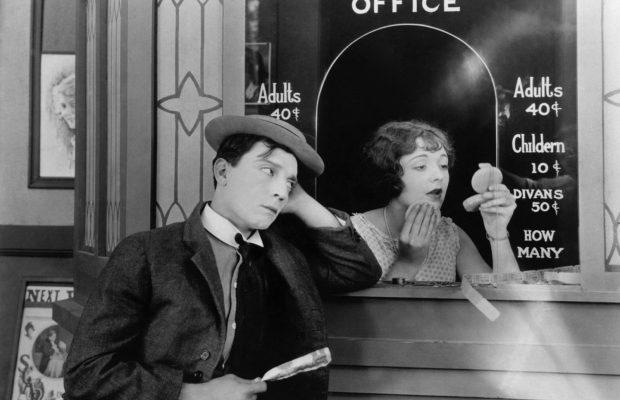
Toronto Film Society presented Sherlock Jr. (1924) on Monday, July 4, 1983 in a double bill with The Smallest Show on Earth as part of the Season 36 Summer Series, Programme 3.
Production Company: Metro. Producer: Joseph M. Schenck. Director: Buster Keaton. Script: Clyde Bruckman, Jean Havez, Joseph Mitchell. Photography: Byron Houck, Elgin Lessley. Technical Director: Fred Gabourie. Costumes: Clare West. Editor: Buster Keaton.
Cast: Buster Keaton (Sherlock Jr.), Kathryn McGuire (the girl), Ward Crane (the rival), Joseph Keaton (her father), Horace Morgan, Jane Connelly, Erwin Connelly, Ford West, George Davis, John Patrick, Ruth Holley.
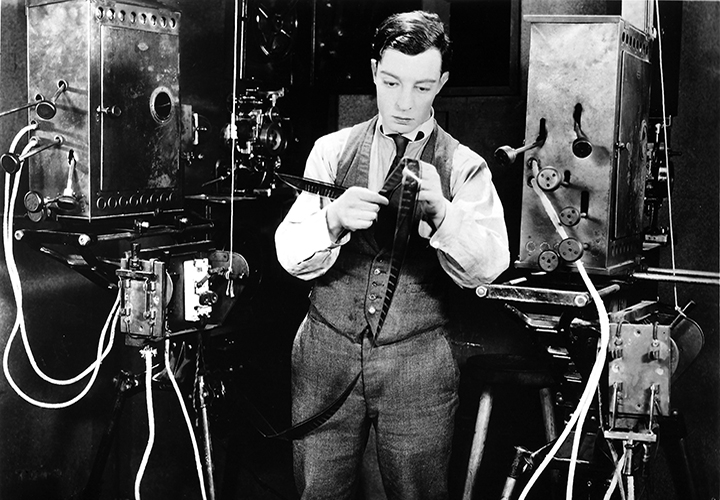
Sherlock Jr. is the fourth feature film directed by and starred in by the silent comic who is generally considered to be Chaplin’s greatest rival. this film presents Keaton as a janitor/projectionist in a small movie theatre, where in his spare time he studies a manual on how to become a detective. From the beginning, the film purports to be a moral tale that illustrates the folly of trying to pursue two careers at once. But this warning, the audience soon realizes, is merely a pretext for Keaton’s comedy, a sham not unlike the kind of deceit that Buster encounters and even gently perpetrates in a world outside his theatre. Any didacticism that exists in Sherlock Jr. is entirely secondary to the hilarious comic elements. Only after the final laughter subsides can an audience realize that the film does contain messages (quite different from Keaton’s ostensible one) and sit back to admire Keaton’s awesome creative intelligence.
Sherlock Jr. presents two different settings. This first is that of the hero’s workaday world with after-hours emphasis on his shy romance with a demure Irish-American lass. Buster’s incompetent wooing is further complicated by his rival for the heroine’s hand, a devious heavy improbably referred as “The Sheik”. (No Valentino he!). This villain’s effort to frame our hero in the plot device that allows the film projectionist an opportunity to resort to his true vocation in order to unravel the mystery of the missing watch.
The second setting is that of a film-within-a-film that Buster quite literally enters while dreaming during a screening. The film, entitled “Hearts and Pearls” or “The Lounge Lizard’s Lost Love,” offers a world of high society that eventually appears no more of an illusion than the simple small-town world that the hero has abandoned. In fact, the film-within-a-film device (sometimes referred to as composition en abime) serves to underscore Keaton’s first message, the problem of distinguishing between the illusion of reality and “reality” itself, a problem that exists especially for film goers. Films, like dreams, can depict the accomplishment of heroic feats that are generally inconceivable in ordinary life and infinitely more attractive to believe in than expectation founded on pragmatic experience.
In making a film about a movie projectionist and his dreams, Keaton alludes to (and gently spoofs) other films of the period. Sherlock Jr. is quite likely referring back to Sherlock Holmes, a John Barrymore film of 1922. Gillette, Buster’s assistant sleuth, is his unlikely Dr. Watson. Gillette’s name recalls the first actor to have played Holmes in America (as well as some razor-sharp reliability). Kathryn McGuire, as the heroine, is dressed, coifed and photographed like a Pickford or Gish, and her modest home looks as though it had been stolen from a D. W. Griffith set. Likewise, her kidnapping and rescue in the film-within-a-film seems like a zany re-make of the Griffith cliché.
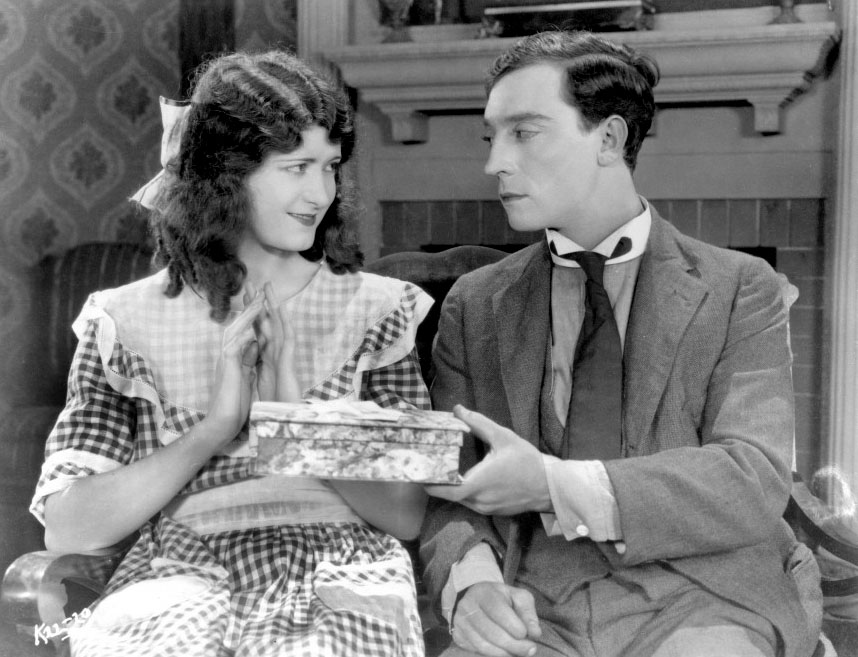
“Hearts and Pearls” looks more like a Cecil B. DeMille drawing-room drama (such as Male and Female). Keaton’s attitude towards this type of film is clear from his designation of this as a “Veronal Production,” veronal being a popular but pernicious sleep inducement of the 1920s. The film does put its projectionist to sleep, but its hero’s ultimate triumph, marriage and paternity provide the film’s second kindly message: that virtue, heroism and true love as portrayed in the movies (of the silent period at least) can provide a valuable social model.
The ultimate pleasure in Sherlock Jr. is derived, of course, from Keaton’s dead-pan persona and astonishing stunts. Shot in 8 weeks without a shotting script, the film contains some of Buster’s most daring physical exploits. A motorbike sequence is the most extended one. But rapid entrances and exits through windows and walls are equally breathtaking. In one episode on the top of a railway car, he broke his shoulder (some say neck) under the force of water from a 10 inch nozzle. In pain, he just kept going and didn’t discover what his problem had been for another decade.
For many audiences, Keaton’s slapstick comedy would be sufficiently satisfying in itself. But his sensitivity to the scope of filmic technique and filmic persuasiveness links Keaton, as Rene Clair has pointed out, simultaneously to Pirandello and the surrealists. Could Chaplin match that?
Notes by Cam Tolton

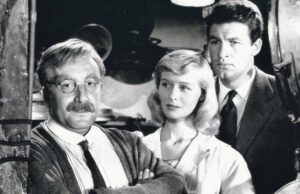
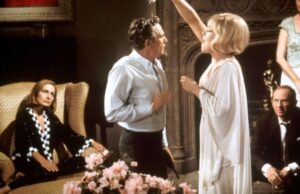
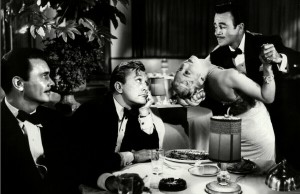






Leave a Reply